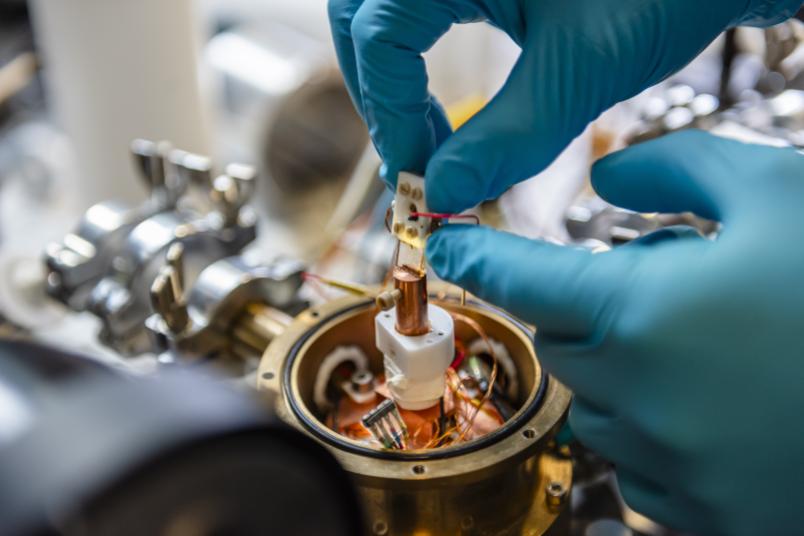
Physics Generating cold with solids
After more than a century, physicists aim to dethrone the tried-and-tested technology of the refrigerator, as cooling can be made more energy-efficient.
The compressor technology used in today’s refrigerators was invented more than a century ago. “The technology has been continuously optimized over the years, of course,” says Daniel Hägele, physicist at Ruhr University Bochum, Germany. “However, recent improvements in energy efficiency classes have mostly involved adjustments like tighter seals on doors.” It’s entirely conceivable to introduce techniques for generating cold that are completely different to those currently in use – based on the caloric effect, for example. The caloric effect refers to the fact that some solid materials react with a change in temperature when they are placed in an electric or magnetic field. Using an experimental setup they developed in-house, Hägele’s team is able to measure the caloric effect at the fastest rate in the world. The Ruhr University Bochum’s science magazine Rubin has published an article on their research.
The Spectroscopy of Condensed Matter working group in Bochum focuses primarily on the electrocaloric effect, i.e. the temperature changes experienced by solids as a result of electric fields. “We can detect changes of one-thousandth of a degree in one-thousandth of a second – no one else can do it that fast,” as Fischer describes what makes the Bochum approach so unique.
Being quick pays off
At first glance, it may seem paradoxical that the group is interested in these tiny changes. “We’re actually looking for materials with the largest possible temperature effects,” admits Hägele. “But sometimes you have to start small.” The small changes on the time scale reveal a lot to the researchers about the fundamental processes that lead to temperature changes in solids. Moreover, materials that can quickly change their temperature would be particularly relevant for applications. “In a caloric cooling process, heat is transported away in packets,” explains Jörg Rudolph, likewise a member of the Bochum-based working group. “In order to make the process efficient, the best possible approach would be to remove the heat packets quickly one after the other."
Cooling based on the caloric effect is a multi-stage process. Typically, a material can only achieve a cooling of three to four, at most six degrees Celsius at one go. However, a cooling system could consist of multiple chambers, providing cooling by a few degrees at the spots where they connect, thus achieving a significant cooling effect overall.
Potentially more efficient than established technologies
Unlike with conventional refrigerators, cold would no longer be generated using a gas or liquid but a solid material. “The advantage of using a solid material is that it contains more atoms per cubic centimeter,” explains Hägele. “This would allow us to build more compact cooling appliances.” And potentially more efficient ones, too.